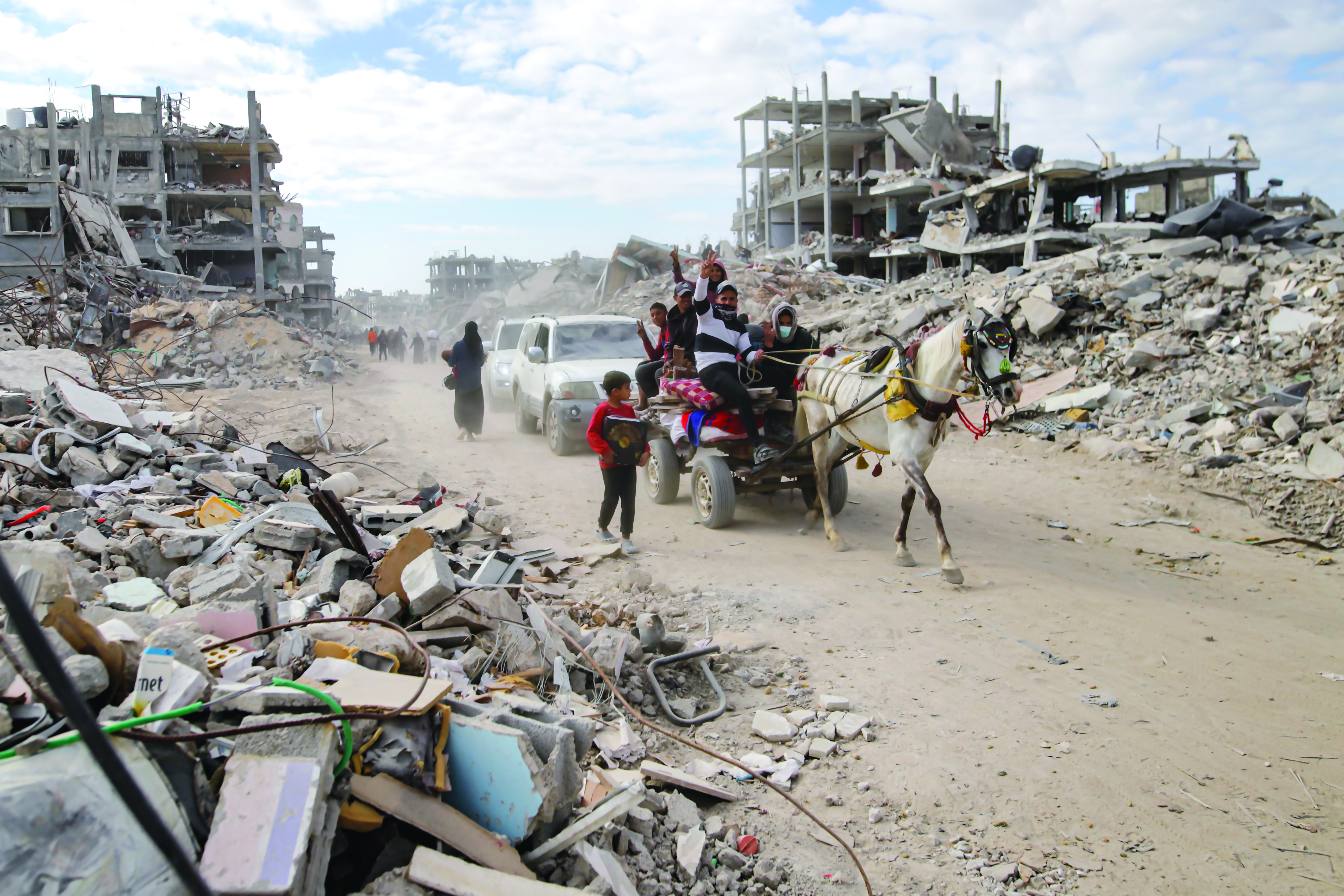Palestinians return to devastated homes in Rafah amid fragile truce

Rafah (Gaza Strip): Palestinians returning to Rafah, Gaza's southernmost city, after an eight-month Israeli military offensive, were met with widespread destruction. Homes and neighbourhoods had been reduced to rubble, leaving many to grapple with the reality of starting over from nothing.
"We found destruction, destruction," said Mohamed Abu al-Kheir, a displaced Palestinian now living in a tent in Khan Younis. “There is nothing to live in. No furniture or anything.”
A tenuous ceasefire in the Israel-Hamas war was holding as of Monday. The truce followed the exchange of three Israeli hostages for 90 Palestinian prisoners in a bid to end the 15-month-long conflict that has devastated Gaza. The three freed hostages, all Israeli women, reunited with their families in central Israel, where medical staff reported their stable condition. Simultaneously, jubilant crowds greeted the Palestinian prisoners released from Ofer prison in the West Bank.
In Rafah, Associated Press footage captured scenes of extensive destruction. Residents searched the ruins of their homes while others inspected abandoned military vehicles left behind by Israeli forces. Entire families returned with hopes of reclaiming their lives, only to be met with devastation.
“Who wants to live in such destruction?” asked Mahmoud Khamis, a Rafah resident whose home was obliterated. “No one will come to live here.”
Abd, a father of six, stood amidst the wreckage of his two homes and those of his brothers. With no shelter or basic services, he called his wife, who awaited news in al-Mawasi camp with their belongings loaded onto a truck. Her hopes for a return were dashed as Abd broke the news: their homes were uninhabitable.
“The Rafah we knew is gone,” Abd said somberly. “The streets we grew up on, the places we worked—they are unrecognizable now.”
The ceasefire has provided a glimmer of hope for an end to a war that has killed more than 46,900 people and displaced over 2 million. Yet, the scars left behind in Rafah are overwhelming. According to United Nations estimates, over 60 per cent of Gaza’s buildings and 65 per cent of its roads have been destroyed. Debris—laden with unexploded ordnance and hazardous substances—poses additional risks to returning residents.
Nasim Abu Alwan, who returned with his nine children to find their home obliterated, resolved to live among the ruins. “We’ll haul water from afar if we must,” he said. “We’re done with tents. We’re staying in Rafah, no matter what.”
Others, like Amjad Abdullah, remained in Khan Younis, unwilling to face the inhospitable conditions in Rafah. “It’s impossible to live here,” Abdullah remarked. “Rafah has become a graveyard of buildings. Without water, roads, or basic infrastructure, life here is unimaginable.”
Rafah’s mayor, Mohammed al-Sufi, described the scale of destruction as staggering, with 70 per cent of the city’s infrastructure destroyed. Critical areas like the Philadelphi Corridor, a strip along Gaza’s border with Egypt, remain inaccessible, compounding the challenges of reconstruction.
Municipal workers are working tirelessly to clear roads, restore water, and manage the dangers of unexploded ordnance. However, officials warn that a gradual and cautious return is essential to prevent further calamities.
Despite the warnings, many residents are determined to rebuild. Families cling to their connection with Rafah, vowing to reclaim their city, even if it takes a lifetime. “We’ve suffered too much in exile,” one father said. “Rafah is home, and we will rebuild.”
The ceasefire also brought the release of three Israeli hostages, including Emily Damari, a British-Israeli dual national injured during Hamas’s October 2023 attack on Kfar Aza. Her family described her as “the happiest girl in the world” upon her release. However, columnist Sima Kadmon warned Israelis to brace for the emotional toll of future hostage returns, which may include severely injured or deceased individuals.
In Gaza, Hamas vowed resilience despite the destruction. “Gaza, with its great people and its resilience, will rise again to rebuild what the occupation has destroyed,” the group declared.
Meanwhile, international relief efforts are underway. The United Nations reported that 630 aid trucks have entered Gaza since the ceasefire began, providing desperately needed food, medical supplies, and other essentials. The World Food Programme aims to reach one million Gazans in the coming days, while municipal workers race to stabilize conditions for returning families.
The people of Rafah face an uphill battle to rebuild their city and their lives. For many, the ceasefire offers a fragile hope—a chance to return, rebuild, and heal after months of relentless suffering. But as residents survey the devastation, the challenges of reconstruction loom large.



